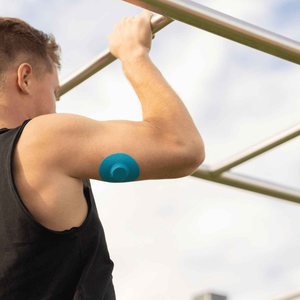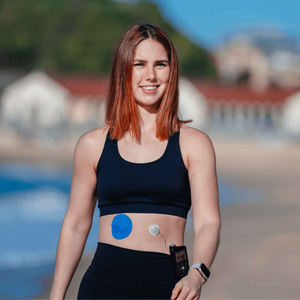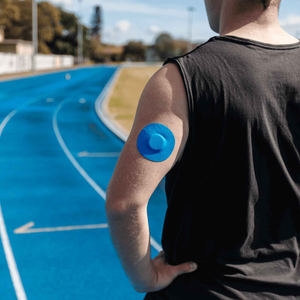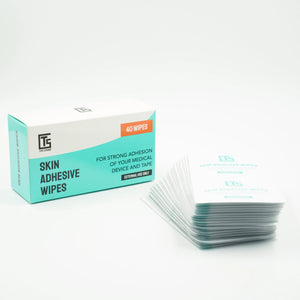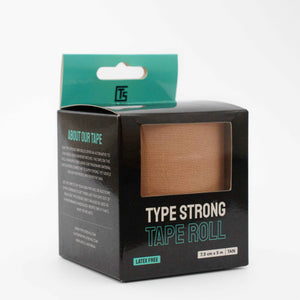If you live with diabetes, you probably know how unpredictable blood glucose can feel after a meal. Even when you carefully count carbs, levels can spike unexpectedly. That’s why a growing trend called the “fart walk” is catching on – a light, 10–15 minute stroll after dinner that helps digestion, steadies blood glucose, and leaves you feeling more comfortable.
This quirky name is memorable, but the benefits are genuine. For people using a CGM patch, a short post-meal walk can make daily readings easier to manage and provide real-time feedback on how lifestyle choices affect glucose control.
What is a “fart walk” and why does it matter?
The trend went viral earlier this year when one woman shared her routine on Instagram. “My husband and I go for fart walks most nights after dinner,” Smith says in a video posted to her Instagram with nearly half a million likes. “Why? Because walking is helping maintain our blood sugars, keeping them from ricocheting all around. And as you age, especially after 40, you have a bigger chance of developing Type 2 diabetes” Instagram video.
Beyond the social media buzz, the medical evidence supports it. Walking for 2.5 hours a week — that’s just 21 minutes a day — can cut your risk of heart disease by 30%. In addition, this do-anywhere, no-equipment-required activity has also been shown to reduce the risk of diabetes and cancer, lower blood pressure and cholesterol, and keep you mentally sharp, according to Harvard Health Publishing. For people with diabetes, even shorter 10–15 minute walks after meals can make a visible difference on your CGM readings.
Post-meal walk benefits for diabetes management
When you eat, glucose enters your bloodstream as food is digested. Insulin then works to move that glucose into your cells for energy. If you’re insulin resistant or your body doesn’t make enough insulin, blood sugar stays higher for longer.
Walking helps because your muscles use glucose for energy, which can lower blood sugar levels without relying only on insulin. A CGM makes this visible – you may notice a steadier curve on your sensor graph on days you walk after dinner compared to days you don’t.
Walking after dinner vs sitting: What happens to blood sugar?
|
Routine |
Impact on blood glucose |
Other benefits |
|
Sitting after a meal |
Higher spikes, slower return to baseline |
Possible bloating, sluggishness |
|
10–15 min post-meal walk |
Lower glucose rise, faster recovery |
Supports digestion, boosts mood, helps sleep |
People also ask
Is it good to walk right after eating?
Yes. Gentle walking after meals is safe for most people and can reduce post-meal blood sugar levels. A light stroll is best – no need for intense exercise immediately after eating.
How long should you walk after dinner to lower blood sugar?
Research suggests 10–15 minutes is enough to make a noticeable difference in post-meal glucose readings. Longer walks can offer more benefits, but consistency matters most.
Does walking after meals help type 2 diabetes?
Yes. Walking after meals can improve insulin sensitivity and glucose control in type 2 diabetes. Many people using a CGM patch find it easier to see the impact directly in their daily trends.
Can walking replace diabetes medication?
No. Walking is a helpful lifestyle tool but should never replace prescribed medication. Always follow your healthcare team’s advice when adjusting treatment.
How CGM patches make post-meal walks easier
With a CGM, you don’t have to guess how your body responds to a meal or activity. A short walk after dinner may show a noticeably flatter glucose curve. That real-time feedback can motivate you to make evening walks part of your daily routine.
To make sure your sensor stays secure during movement, a reliable CGM patch can help. Type Strong patches are designed to stay on through walks, exercise, and even sleep. If you’re looking for a stronger hold, products like the Dexcom G7 patches or the Freestyle Libre adhesive patches offer breathable comfort while protecting your sensor.

Pair evening walks with proper skin prep
Before applying a patch, focusing on proper skin prep helps it last through movement and heat. Many users also keep adhesive wipes on hand to refresh their patch if edges start to lift. That way, your post-meal walks don’t interfere with sensor accuracy.
Lifestyle momentum - Walking, patches, and consistent glucose care
A post-meal walk might sound too simple to make a difference, but it’s often the small, consistent routines that have the greatest impact. CGM users who combine walks with good patch care tend to get clearer sensor data, more stable readings, and greater confidence in their daily management.
If you’ve struggled with patch comfort at night or wondered how long a patch should last, adding movement after meals can help you get even more from your sensor.
Why you should try a “fart walk” tonight
Post-meal “fart walks” may have a funny name, but their benefits are anything but silly. By moving your body for just 10 minutes after dinner, you can help smooth glucose levels, support digestion, and even sleep better. With your CGM patch in place, you’ll see the impact in real time – a powerful reminder that small steps really do add up.
So next time you finish a meal, lace up your shoes and take a stroll. Your body, your sensor, and your future self will thank you.
